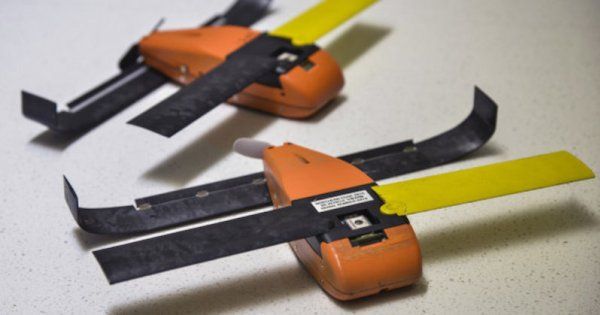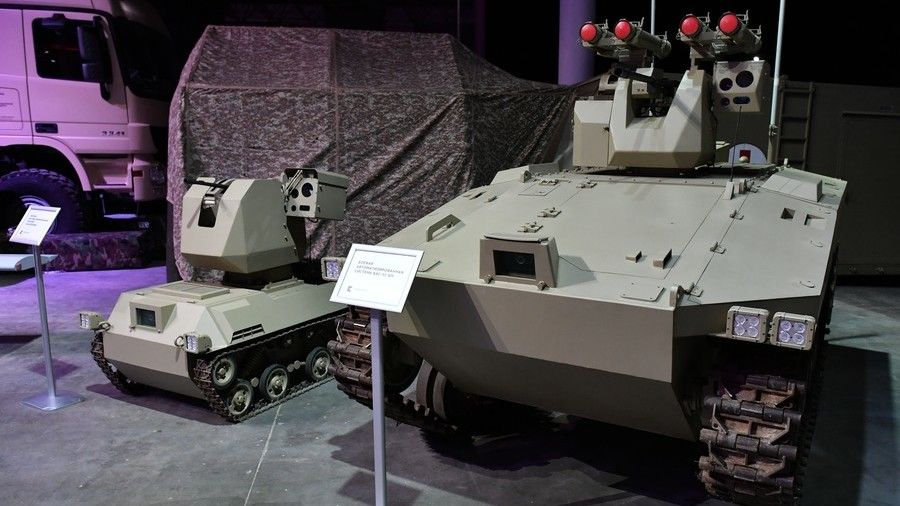Archive for the ‘surveillance’ category: Page 30
Jun 24, 2018
China takes surveillance to new heights with flock of robotic Doves, but do they come in peace?
Posted by Dan Kummer in categories: drones, robotics/AI, surveillance
China has built a flock of robotic Doves, but do they come in peace?
Hi-tech drones that look and move like real birds have already flown over restive Xinjiang region.
May 17, 2018
Selfish Ledger: Google’s mass sociology experiment
Posted by Philip Raymond in categories: big data, complex systems, DNA, ethics, evolution, genetics, information science, internet, surveillance
Check out the internal Google film, “The Selfish Ledger”. This probably wasn’t meant to slip onto a public web server, and so I have embedded a backup copy below. Ping me if it disappears. I will locate a permanent URL.
This 8½ minute video is a lot deeper—and possibly more insipid—than it appears. Nick Foster may be the Anti-Christ, or perhaps the most brilliant sociologist of modern times. It depends on your vantage point, and your belief in the potential of user controls and cat-in-bag containment.
 He talks of a species propelling itself toward “desirable goals” by cataloging, data mining, and analyzing the past behavior of peers and ancestors—and then using that data to improve the experience of each user’s future and perhaps even their future generations. But, is he referring to shared goals across cultures, sexes and incomes? Who controls the algorithms and the goal filters?! Is Google the judge, arbiter and God?
He talks of a species propelling itself toward “desirable goals” by cataloging, data mining, and analyzing the past behavior of peers and ancestors—and then using that data to improve the experience of each user’s future and perhaps even their future generations. But, is he referring to shared goals across cultures, sexes and incomes? Who controls the algorithms and the goal filters?! Is Google the judge, arbiter and God?
Continue reading “Selfish Ledger: Google’s mass sociology experiment” »
May 13, 2018
Artificial intelligence is changing everything, ‘We need a different mentality’
Posted by Genevieve Klien in categories: information science, military, robotics/AI, surveillance
WASHINGTON — The U.S. military got is first big taste of artificial intelligence with Project Maven. An Air Force initiative, it began more than a year ago as an experiment using machine learning algorithms developed by Google to analyze full-motion video surveillance.
The project has received high praise within military circles for giving operators in the field instant access to the type of intelligence that typically would have taken a long time for geospatial data analysts to produce.
Project Maven has whetted the military’s appetite for artificial intelligence tools. And this is creating pressure on the National Geospatial-Intelligence Agency to jump on the AI bandwagon and start delivering Maven-like products and services.
Continue reading “Artificial intelligence is changing everything, ‘We need a different mentality’” »
May 6, 2018
Race of the war machines: Russian battlefield robots rise to the challenge
Posted by Derick Lee in categories: drones, military, robotics/AI, surveillance
The battlefields of the future look set to be the province of robots duking it out on the field as their operators sit pretty, miles away. Russia is moving in leaps and bounds towards fielding its own unmanned forces.
Modern robots are nothing like the Terminator: Fielding human-shaped automatons for combat is much more trouble than it’s worth, so most ground robots are more or less tank- or car-shaped. They aren’t fully controlled by an artificial intelligence, either – not just yet, at least.
With its enormous war budgets and military industrial sector, it’s no surprise the US has been at the forefront of unmanned combat vehicle development. Its Predator drones have been raining death on Pakistan, Afghanistan and Yemen for over 15 years now, and it has been employing small, ground-based firing platforms like SWORDS for years, not to mention the multitude of bomb disposal and surveillance robots.
Apr 22, 2018
GomSpace Successfully Commissions GOMX-4 Nanosats
Posted by Genevieve Klien in categories: space, surveillance, transportation
STOCKHOLM (GomSpace PR) — As part of a mission to demonstrate interlink communication on nanosatellite tandem formation flights and data retrieval, including surveillance of the Arctic area, the Danish nanosatellite specialist GomSpace launched two nanosatellites in February.
Twelve weeks later, GomSpace for the first time showed the possibility of live data capture from the two nanosatellites in space at a press conference held in Aalborg, Denmark. At the same time, the press conference marked the official transition to the so-called demonstration phase, following the mission’s test phase. The latter has thus been successfully completed, and the mission is now ready to carry out its scheduled tasks.
On February 2, 2018, GomSpace launched two nanosatellites mounted on the Chinese missile Long March 2D from a launch station in the Gobi Desert. The objective of the two nanosatellites, based on GomSpace’s 6U platform, is in part to monitor the Arctic area. It is an area where ice has melted significantly in recent years, meaning that the area sees more and more activity in the shape of aircraft and ships, researchers and tourists.
Continue reading “GomSpace Successfully Commissions GOMX-4 Nanosats” »
Apr 16, 2018
Team develops face recognition technology that works in the dark
Posted by Genevieve Klien in categories: military, privacy, robotics/AI, surveillance
Army researchers have developed an artificial intelligence and machine learning technique that produces a visible face image from a thermal image of a person’s face captured in low-light or nighttime conditions. This development could lead to enhanced real-time biometrics and post-mission forensic analysis for covert nighttime operations.
Thermal cameras like FLIR, or Forward Looking Infrared, sensors are actively deployed on aerial and ground vehicles, in watch towers and at check points for surveillance purposes. More recently, thermal cameras are becoming available for use as body-worn cameras. The ability to perform automatic face recognition at nighttime using such thermal cameras is beneficial for informing a Soldier that an individual is someone of interest, like someone who may be on a watch list.
The motivations for this technology—developed by Drs. Benjamin S. Riggan, Nathaniel J. Short and Shuowen “Sean” Hu, from the U.S. Army Research Laboratory—are to enhance both automatic and human-matching capabilities.
Apr 11, 2018
The world’s most valuable AI startup is a Chinese company specializing in real-time surveillance
Posted by Genevieve Klien in categories: augmented reality, finance, government, mobile phones, robotics/AI, surveillance
Artificial intelligence is being used for a dizzying array of tasks, but one of the most successful is also one of the scariest: automated surveillance. Case in point is Chinese startup SenseTime, which makes AI-powered surveillance software for the country’s police, and which this week received a new round of funding worth $600 million. This funding, led by retailing giant Alibaba, reportedly gives SenseTime a total valuation of more than $4.5 billion, making it the most valuable AI startup in the world, according to analyst firm CB Insights.
This news is significant for a number of reasons. First, it shows how China continues to pour money into artificial intelligence, both through government funding and private investment. Many are watching the competition between China and America to develop cutting-edge AI with great interest, and see investment as an important measure of progress. China has overtaken the US in this regard, although experts are quick to caution that it’s only one metric of success.
Secondly, the investment shows that image analysis is one of the most lucrative commercial applications for AI. SenseTime became profitable in 2017 and claims it has more than 400 clients and partners. It sells its AI-powered services to improve the camera apps of smartphone-makers like OPPO and Vivo; to offer “beautification” effects and AR filters on Chinese social media platforms like Weibo; and to provide identity verification for domestic finance and retail apps like Huanbei and Rong360.
Mar 31, 2018
No-limits China sets its sights on AI top spot
Posted by Genevieve Klien in categories: drones, government, mobile phones, robotics/AI, surveillance
O n the outskirts of Beijing, a policeman peers over his glasses at a driver stopped at a motorway checkpoint. As he looks at the man’s face, a tiny camera in one of the lenses of his glasses records his features and checks them with a national database.
The artificial intelligence-powered glasses are what Chinese citizens refer to as “black tech”, because they spot delinquents on the country’s “blacklist”. Other examples include robots for crowd control, drones that hover over the country’s borders, and intelligent systems to track behaviour online. Some reports claim the government has installed scanners that can forcibly read information from smartphones.
In the last two weeks, Facebook has been mired in a privacy storm in the UK and US over potential misuse of personal data. But such an event might baffle many in China, where the country’s surveillance culture eclipses anything Facebook has done.
Continue reading “No-limits China sets its sights on AI top spot” »
Mar 28, 2018
Watch military swarm drones lock on and surround a target
Posted by Klaus Baldauf in categories: drones, military, robotics/AI, surveillance
Autonomous weapon bans (previously) are currently being debated, but in the meantime, the US Department of Defense continues work with its Perdix Micro-Drone project. Ostensibly for surveillance, it’s clear these could easily be modded with lethal weaponry.

F/A-18 Super Hornets deploy the drones, which can then perform a series of tactical maneuvers based on post-launch commands.















